
Craftsmanship
At Takamine, we’re artisans and craftspeople at heart.
We aim to craft guitars in an artful, thoughtful way—instruments that take your performance to new heights.
High-volume builders use production machinery to speed up their output, but speed isn’t the issue for us—it’s the quality of the instrument.We’re proud of the level of our craftsmanship, and we invite you to see it for yourself by taking a close look at our instruments, part by part.
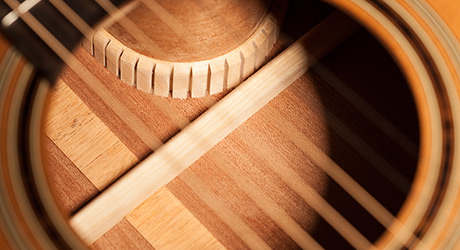
The Delicate Soundboard Balance
Spruce and cedar soundboards have been used for well over a millennium, and the modern bracing system has been around for at least 150 years. We use a traditional “X” bracing pattern on our steel-string models, differently voiced for each application.
Rather than make any radical departures, we make many small changes that add up to a significant difference in volume, balance and richness. Takamine® soundboards are braced and voiced by hand—by tapping each top, a skilled luthier knows just how to shape the braces for the best possible response.
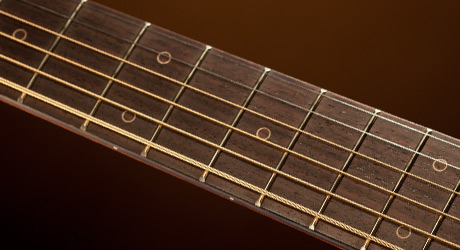
The Fret Secret
Most guitar makers don’t give frets enough credit—or attention. A good fret job can help a player reach new heights.
Examine the frets on a Takamine. What you see is the work of a laser-guided fret finishing system that levels and crowns each fret to within 0.0001” of dead-on. Fret a note, notice how the string contacts the center line of the fret perfectly, and hear the clarity when you play. A good fret job can be the difference between a nice guitar and a great guitar.
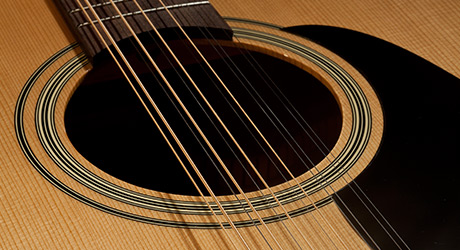
Appointments By Deluxe
Takamine pioneered the use of uncommonly artistic and complex inlay work on guitars for working players. We’ve developed the art of design and the craft of precise inlay work far beyond the capabilities of most other guitar makers.
Look closely at Takamine rosettes and inlays. Such meticulous handiwork is a clearly visible sign of our commitment to excellence in every element of our guitars.
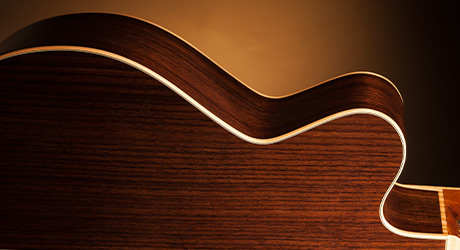
Skin Deep and More
Your Takamine is beautiful on the outside, but beauty is more than skin deep. Look inside and see for yourself—finely sanded braces and meticulously cut linings display a level of hand craftsmanship fast disappearing from modern guitars.
There’s a century-old phrase from the arts and crafts movement: “Anything worth doing is worth doing well.” That spirit lives on today at Takamine.

Body Talk
With their many distinctive curves, guitar bodies accommodate a wide range of frequencies. Different body shapes favor different frequencies, giving them a distinct tonal character.
Dreadnoughts are typically louder, with stronger lows. Smaller bodies, such as our NEX, tend to be more balanced. A thinner body may project less but sound more pleasing. Play as many sizes as you can with comfort and sound in mind. Your choice is very personal—what sounds and feels best to you.
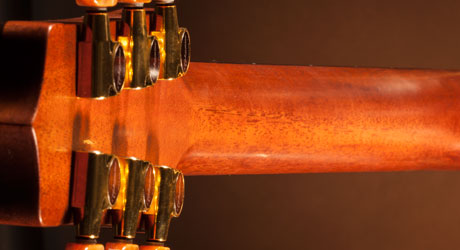
Is There A Perfect Neck Shape?
A century ago, the wide classical shape with a flat fingerboard was the only shape considered “proper,” but we’ve become more open-minded since then. Some players feel you can never be too thin, while others feel it’s far better to be fat. It’s that personal taste thing again.
Takamine necks have an asymmetrical “C” shape—an ergonomic contour slightly thinner on the bass side of the neck so that it fits the natural shape of your hand. Overall, it’s thin from front to back and medium in width, with a gentle fingerboard arch. Perfectly comfortable.
